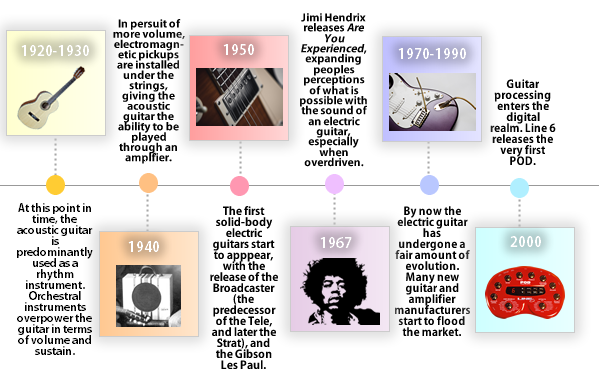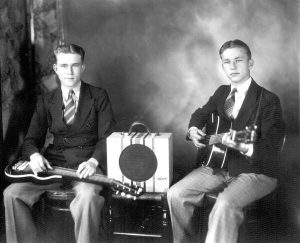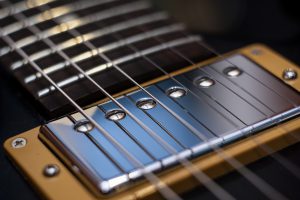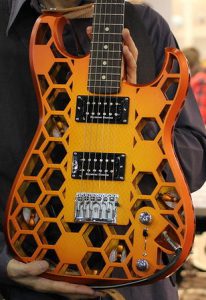The evolution of the electric guitar is still underway. During the era of Bach, Beethoven and Mozart, it hadn’t even been conceived yet. It has little history and predefined rules.

It’s easy to forget that the electric guitar was birthed from an acoustic guitar. During the 19’th century, the big band era, the acoustic guitar was used as a supporting instrument because its volume was a major constraint. Orchestral instruments overpowered the guitar with both volume and sustain.
 Although an acoustic guitar could be amplified by placing a mic in front of it, the results were somewhat unsatisfactory for live performances. Innovators looked for other ways to amplify the signal, and this was achieved by placing an electric pickup under the strings and sending a signal to an amplifier. The first electromagnetic pickup was created by George Beauchamp and Adolph Rickenbacker in 1931.
Although an acoustic guitar could be amplified by placing a mic in front of it, the results were somewhat unsatisfactory for live performances. Innovators looked for other ways to amplify the signal, and this was achieved by placing an electric pickup under the strings and sending a signal to an amplifier. The first electromagnetic pickup was created by George Beauchamp and Adolph Rickenbacker in 1931.
The electric pickup failed to reproduce an exact match of the acoustic guitar sound. It introduced distortion, overtones and feedback. Awareness began to grow that an electrified guitar should be dealt with differently because the sound was influenced by many more factors beyond the vibration of the strings.
The first solid-body electric guitar was invented by Paul Bigsby in 1948. This inspired Leo Fender to create the Broadcaster which would later become known as the Telecaster. It was the first commercially available solid-body electric guitar. Inspired by the Telecaster, Les Paul created his own solid-body guitar which he built in collaboration with the Gibson Corporation. This was called the Gibson Les Paul.

A humbucker pickup.
Fender introduced the Stratocaster in 1954. It featured 3 pickups and a tremolo system. A few years later, Gibson introduced a sunburst finish alongside their new innovation – the humbucking pickup.
In 1965, Jimi Hendrix used the electric guitar to produce intentional feedback and deliberate distortions. This helped to expand people’s perceptions of what was possible with an overdriven guitar sound, however, it’s worthy to note that before Hendrix came Chuck Berry, Jimmy Page and John Fogerty. An early adapter of the electric guitar’s newfound qualities was jazz guitarist Charlie Christian.
Gibson and Fender became familiar brands due to their use by rock guitarists in the 1960s.

A 3D printed guitar. Photo by Maurizio Pesce.
The electric guitar continues to evolve today as manufacturers and inventors explore new ways to modify the instrument. Guitar makers are now looking at bodies made from plastic and graphite, as well as designs that include semi-hollow bodies. 3D printing is attracting the attention of many manufacturers. This technology will allow manufacturers to create compelling designs before the manufacturing process is initiated.
